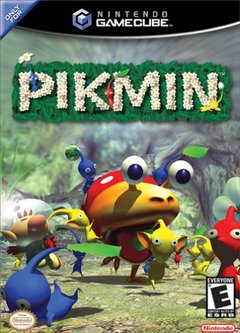
Pikmin is a 2001 real-time strategy puzzle video game developed and published by Nintendo for the GameCube. The game was created and produced by Shigeru Miyamoto, and is the first entry in the Pikmin series. The game's story focuses on an alien pilot, Captain Olimar, who crash lands on a mysterious planet and must make use of a native species called "Pikmin" to find his ship's missing parts in order to escape within 30 days. Players take control of Olimar and direct the different varieties of Pikmin to explore the game's various levels, overcoming obstacles and hostile creatures, in order to find and recover the missing ship parts.

Pikmin 2 is a 2004 real-time strategy puzzle video game developed and published by Nintendo for the GameCube. It is the direct sequel to the 2001 game Pikmin and the second game in the Pikmin series. In the game, Olimar returns to the Pikmin planet to collect valuable treasure after learning that the company he works for—Hocotate Freight—is on the verge of bankruptcy.
Pikmin is a real-time strategy and puzzle video game series created by Shigeru Miyamoto, and published by Nintendo. The games focus on directing a horde of plant-like creatures called Pikmin to collect items by destroying obstacles, avoiding hazards, and fighting fauna that are hazardous to both the player character and the Pikmin.

Animal Crossing is a social simulation video game series developed and published by Nintendo. The series was conceptualized and created by Katsuya Eguchi and Hisashi Nogami. In Animal Crossing, the player character is a human who lives in a village inhabited by various anthropomorphic animals and can do various activities like fishing, insect catching, and fossil hunting. The series is notable for its open-ended gameplay and use of the video game console's internal clock and calendar to simulate real passage of time.
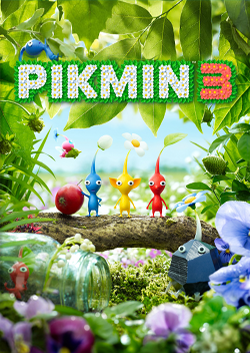
Pikmin 3 is a 2013 real-time strategy and puzzle video game developed and published by Nintendo for the Wii U video game console. It is the sequel to the GameCube games Pikmin (2001) and Pikmin 2 (2004), and was released in Japan on July 13, 2013, and in all other regions the next month. Shigeru Miyamoto announced Pikmin 3 on July 16, 2008, for the Wii console, later stating at E3 2011 that it had transitioned to the Wii U.

Animal Crossing: New Leaf is a 2012 social simulation game developed and published by Nintendo for the Nintendo 3DS. In the game, the player controls a human character who takes on the role of mayor in a town populated with anthropomorphic animals. As the fourth main title in the Animal Crossing series, it was released in Japan in November 2012, and in 2013 in international territories.
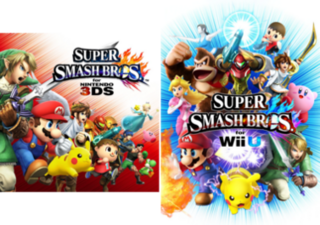
Super Smash Bros. for Nintendo 3DS and Super Smash Bros. for Wii U, both commonly referred together as Super Smash Bros. 4, are 2014 crossover platform fighter video games developed by Bandai Namco Studios and Sora Ltd. and published by Nintendo for the Nintendo 3DS and Wii U video game consoles. It is the fourth installment in the Super Smash Bros. series, succeeding Super Smash Bros. Brawl. The Nintendo 3DS version was released in Japan on September 13, 2014, and in North America, Europe, and Australia the following month. The Wii U version was released in North America, Europe, and Australia in November 2014 and in Japan the following month.

Arzest Corporation is a Japanese video game development company that develops games for video game consoles. It was formed on June 25, 2010 by key members of Artoon, which was also founded by Executive Vice President Naoto Ohshima, best known as the character designer of Sonic the Hedgehog, as well as his nemesis Doctor Eggman. Arzest was also founded by key Artoon and Sega members who worked on the Panzer Dragoon series.

Super Mario Maker is a 2015 platform game and game creation system developed and published by Nintendo for the Wii U, released worldwide in September 2015. Players can create, play, and share courses online, free of charge, based on the styles of Super Mario Bros., Super Mario Bros. 3, Super Mario World, and New Super Mario Bros. U. The game was revealed as the final challenge of Nintendo World Championships 2015.
Amiibo is a toys-to-life platform by Nintendo, which was launched in November 2014. It consists of a wireless communications and storage protocol for connecting figurines to the Wii U, Nintendo 3DS, and Nintendo Switch video game consoles. These figurines are similar in form and functionality to that of the Skylanders, Disney Infinity and Lego Dimensions series of toys-to-life platforms. The Amiibo platform was preannounced to potentially accommodate any form of toy, specifically including general plans for future card games. Amiibo use near field communication (NFC) to interact with supported video game software, potentially allowing data to be transferred in and out of games and across multiple platforms.
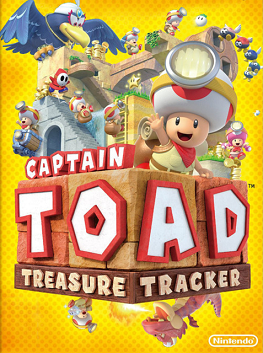
Captain Toad: Treasure Tracker is a 2014 action puzzle video game developed and published by Nintendo for the Wii U. The game was re-released for the Nintendo Switch and Nintendo 3DS in 2018 with additional content. It is a spin-off of the Super Mario series and a part of the larger Mario franchise. The game stars Captain Toad and Toadette as they complete levels, defeat enemies and save each other from the antagonist Wingo. Each level is contained within a miniature diorama-like environment that requires puzzle-solving and platforming challenges to complete. The player also uses the Wii U GamePad to rotate the camera and reveal new information and interact with the environment.

Splatoon is a 2015 third-person shooter video game developed and published by Nintendo for the Wii U. The game centers around Inklings—anthropomorphic cephalopodic lifeforms that can transform between humanoid and cephalopod forms and frequently engage in turf wars with each other and use a variety of weapons that produce and shoot colored ink while in humanoid form, or swim and hide in surfaces covered in their own colored ink while in their cephalopodic forms. Splatoon features several different game modes, including four-on-four online multiplayer and a single player campaign.

Yoshi's Woolly World is a 2015 platform game developed by Good-Feel and published by Nintendo for the Wii U. The game is the seventh main entry in the Yoshi series of games, the first home console title in the series since 1997's Yoshi's Story, as well as the spiritual successor to 2010's Kirby's Epic Yarn. The game was released worldwide throughout 2015. A port for the Nintendo 3DS, known as Poochy & Yoshi's Woolly World, was released worldwide in early 2017. Both versions received generally favorable reviews, with reviewers praising the art style, gameplay, and innovation, but critiquing the easy difficulty.

Star Fox Zero is a 2016 rail shooter video game developed by Nintendo and PlatinumGames for the Wii U. It is the sixth installment in the Star Fox series. Formally announced at E3 2015, the game was released in April 2016 to mixed critical reception, with the most polarizing aspect of the game being its control scheme. A standalone tower defense game, titled Star Fox Guard, was bundled with the game.

Animal Crossing: Amiibo Festival is a 2015 party video game developed by Nintendo and NDcube for the Wii U. Similar to the Mario Party series, the game is a spin-off of the Animal Crossing series that moves away from the series traditional format, instead being a party game that primarily integrates Amiibo figures into the gameplay. Alongside the release of the game, 8 Animal Crossing Amiibo character figures were released for use in the game. It was released worldwide in November 2015.

Pikmin 4 is a 2023 real-time strategy video game co-developed by Nintendo EPD and Eighting, and published by Nintendo. It is the fourth main installment of the Pikmin series, following Pikmin 3 (2013), and the sixth installment overall. It was released on the Nintendo Switch on July 21, 2023.

Nintendo Entertainment Planning & Development Division, commonly abbreviated as Nintendo EPD, is the largest division within the Japanese video game company Nintendo. The division focuses on developing and producing video games, mobile apps, and other related entertainment software for the company. EPD was created after merging their Entertainment Analysis & Development (EAD) and Software Planning & Development (SPD) divisions in September 2015.
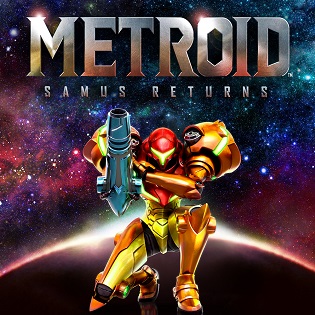
Metroid: Samus Returns is a 2017 action-adventure game developed by MercurySteam and Nintendo EPD and published by Nintendo for the Nintendo 3DS handheld game console. It is a remake of the 1991 Game Boy game Metroid II: Return of Samus. Players control series protagonist Samus Aran, a bounty hunter who is contracted by the Galactic Federation to exterminate the parasitic Metroid species on their home planet of SR388. While the story and structure parallel the original game, Samus Returns features redone graphics, updated controls and user interface, and new gameplay mechanics not seen in previous 2D Metroid titles, such as a melee counterattack and the ability to aim freely at any angle.
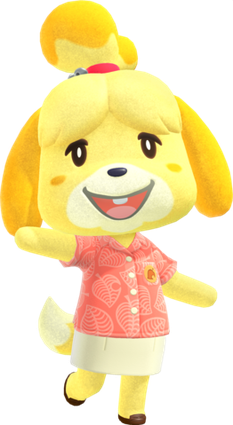
Isabelle, known as Shizue (しずえ) in Japan, is a fictional character from the Animal Crossing series of video games. She is a gentle Shih Tzu that debuted in the 2012 release Animal Crossing: New Leaf, where she serves as the secretary to the player character.
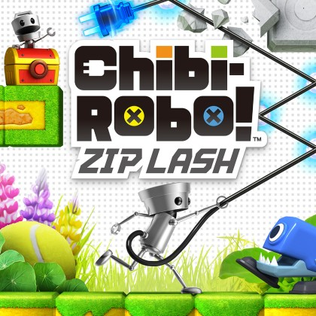
Chibi-Robo! Zip Lash is a 2015 side-scrolling platform game developed by Skip Ltd. and Vanpool and published by Nintendo for the Nintendo 3DS. It is the fifth installment in the Chibi-Robo! series, and the second Chibi-Robo! game for the 3DS after Chibi-Robo! Photo Finder (2014). Zip Lash players control the character Chibi-Robo, a robot that is tasked with roaming the world and defending its natural resources from a fleet of invading aliens. Chibi-Robo is equipped with a cord and plug with which he can attack enemies and get to inaccessible places. Throughout the levels, the player can find collectibles such as big coins, Chibi-Tots, and snacks that are based on real-world brands.
















